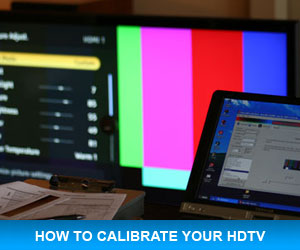120Hz/240Hz/480Hz LCD TV: What is it?
| Definitions Applications LCD TV Response Time |
120Hz and 240Hz are the new buzzwords in LCD TV technology. We are often asked exactly what this means and what effect it has on you, the viewer. Let's get a few technical terms out of the way first to make this easier to understand.
- Hertz (Hz) – Hertz is a a unit of frequency equal to one cycle per second. If you were to think of the Hertz rate of turning a light switch on and off, 1Hz would be turning the light on and off, 1 time in 1 second.
- Refresh Rate – In televisions and monitors, refresh rate is the number of times the screen is redrawn in one second. It is expressed in hertz (Hz). A TV with a refresh rate of 60Hz redraws the screen 60 times per second.
- Frame Rate – Moving pictures are actually a series of still images that are displayed quickly in succesion to give the appearance of motion. Frame rate is the number of still images displayed in one second, it is often expressed as frames per second (fps). Video in the NTSC format is displayed at 29.97 frames per second (25 fps for PAL and SECAM) and film is shot at 24 frames per second.
- 3:2 pulldown – Above we can see that video on your television is displayed at 29.97 frames per second and movies are shot on film at 24 frames per second. This creates a problem if you want to view something shot on film on a television. There are nearly 5 frames missing from the conversion. To solve this problem a process called 3:2 pulldown is used to convert the film into something you can watch on your TV. This is done by adding extra frames to the film to fill in the extra space. For example, if we have 4 frames of video denoted as ABCD it would be converted to video by adding an extra frame to the 4 film frames (ABBCD). This results in what is known as "judder".
- Judder – A visual artifact that results when converting film content to video. It is most often seen as what appears to be jerky camera movement where there should be smooth panning.
- 24p – 24p is simply video content running at 24 frame per second, just like film.
120Hz/240Hz LCD TVs Displaying Film Content
A little math and the above explanations show the advantages of displaying film content on a screen with a 120Hz or 240Hz refresh rate. Most LCD TVs have a refresh rate of 60Hz. 24 does not go into 60 without a remainder so 3:2 pulldown and it's resulting judder is required to display film content on a TV redrawing the screen 60 times a second. On the other hand, 24 goes into 120 or 240 evenly so film can be displayed at it's native frame rate eliminating judder.
Most Blu Ray players can output content at 24p so with this and a 120Hz/240Hz LCD TV you will be seeing an accurate number of frames when watching film content.









